1437 Liberals & populists in paradise
A Long Way to Paradise: A New History of British Columbia Politics
by Robert A.J. McDonald
Vancouver: UBC Press, 2021
$39.95 / 9780774864718
Reviewed by Forrest Pass
*
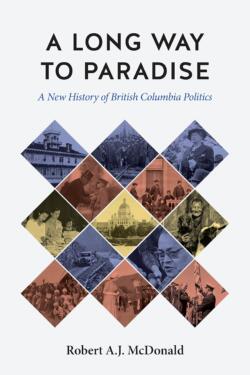 British Columbia politics is — and has always been — wacky, right? No other province can boast a premier so eccentric that he legally changed his name from William Smith to Amor de Cosmos. Nor, for that matter, has the premier of any other province dramatically set fire to a barge-load of government bonds to signal the elimination of the provincial debt.
British Columbia politics is — and has always been — wacky, right? No other province can boast a premier so eccentric that he legally changed his name from William Smith to Amor de Cosmos. Nor, for that matter, has the premier of any other province dramatically set fire to a barge-load of government bonds to signal the elimination of the provincial debt.
Such anecdotes hint at two features of much of British Columbia political historiography for decades, especially the popular variety. One has been a focus, particularly in popular histories, on premiers and their personalities rather than on political culture.The second feature has been the assumption that political practice in British Columbia differs essentially from practice elsewhere in Canada. How else can we make sense of the careers of Amor de Cosmos and “Wacky” Bennett?
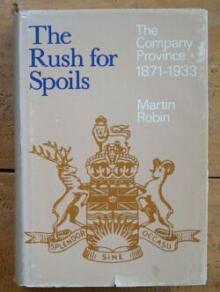
Robert A.J. McDonald’s long awaited history of British Columbia politics provides an exhaustively researched and engagingly written corrective to these assumptions. McDonald, who sadly passed away before the book’s publication, spent almost twenty years working on A Long Way to Paradise. The result is a masterful book that will undoubtedly be the definitive political history of British Columbia for years to come.
The last comprehensive history of British Columbia politics was Martin Robin’s two-volume The Company Province, which appeared almost half a century ago. Robin interpreted British Columbia politics as a clash of class interests. McDonald was always ambivalent about the utility of the Marxist concepts of class and class struggle to explain the province’s past. In a previous book, Making Vancouver (1996), he suggested that social “status,” evident in early Vancouverites’ networks and consumption patterns, was a more useful framework than class, a relationship to production, for explaining the new city’s social structure and divisions. Similarly, in A Long Way to Paradise, McDonald suggests that ideologies have been more important than class interests alone in defining British Columbia’s political divisions.
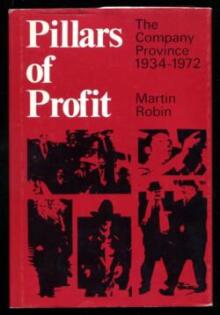
But McDonald does not cast British Columbia political history as the traditional stand-off between left and right. Instead, he argues that liberalism has been settler British Columbia’s dominant political ideology since before Confederation. In this he echoes historian Ian McKay who has argued that Canadian history generally is the story of establishing, extending, and redefining a “liberal order.” Like McKay, McDonald recognizes that “liberalism” has never been a clearly defined set of political beliefs, and its appeal is certainly not limited to the capital “L” Liberal Party — federal or provincial. Rather, applying the “liberal order” framework to British Columbia political history reminds us that, for all their disagreements, British Columbia politicians have tended to uphold the values of private property and individual liberty. They also agreed, at least until the mid-twentieth century, on the principle of white settler dominance, reflected in near-unanimity on the First Nations land and “Oriental” questions. Within these parameters, however, liberalism was a “big tent,” in which contestation rather than consensus is the order of the day.

It is through this lens of contested liberalisms that McDonald makes sense of a century of political division in British Columbia. In the first legislatures after Confederation, the “whiggish” liberal elite of the colonial period struggled to protect their property and privileges from the democratizing demands of a new group of more reform-minded liberals. Even the few socialists who won the occasional seat in the provincial legislature at the turn of the twentieth century were liberal reformers rather than revolutionaries, seeking tangible improvements in working and living standards rather than proletarian revolution. In the twentieth century, the struggle for liberalism increasingly became a battle between “conservative” liberals (mainly within the Conservative and Social Credit parties), who promoted unrestricted free enterprise, and “statist” liberals (the pre-1950s Liberal party and at least elements within the Co-operative Commonwealth Federation, CCF, and its successor, the NDP), who believed in using the power and resources of the state to advance social equality.
Within the liberal order, McDonald discerns two other powerful ideological threads, sometimes mutually reinforcing, more often in conflict. The first is modernism, a belief in a well-organized and efficient state, complete with a professional bureaucracy and scientific and technical advisors, providing a variety of services and supports to its citizenry. The Conservative government of Premier Richard McBride took some tentative steps toward political modernization, but it was his Liberal successors who best exemplified the modernist impulse, especially Harlan Brewster, whose attempt to manage the expectations of reform-minded supporters provides the title for McDonald’s book.

The second thread — equally pervasive — is populism, a commitment to the culture and interests of “ordinary” people as opposed to variously defined “elites.” Today we tend to associate populism with the political right: think MAGA rallies and the Freedom Convoy. But McDonald finds populist elements in the style and substance of British Columbia politicians across the spectrum, from Sir Charles Hibbert Tupper, the well-heeled eminence grise behind the pro-business and anti-patronage “Provincial Party,” to Dave Barrett, the province’s first NDP premier. Although the question of revolutionary socialism versus incremental reform might have animated the leadership of the CCF and the NDP, McDonald suggests that left-wing politicians in British Columbia, like their right-wing rivals, were often most successful when they adopted a populist stance.
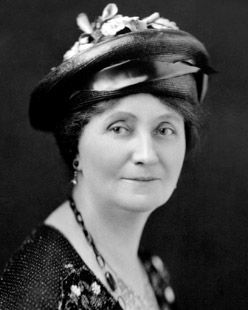
Geography modified these ideologies. McDonald traces a persistent pattern of place-based political culture to pre-Confederation days. In small and isolated settler communities, personal relationships rather than party loyalties underpinned politics; institutions, such as the “government agent” system, whereby a single local appointee fulfilled a wide variety of first colonial- and then provincial-government functions, reinforced local loyalties. Populism and localism went hand-in-hand, with local grievances often being expressed in populist language.
If all of this sounds a little abstract, in McDonald’s accessible history it is anything but. People figure prominently, especially lesser-known figures whom McDonald presents as illustrations of evolving political culture. Every British Columbian might remember at least the name of Amor de Cosmos, but McDonald reminds us that the reform-minded George Walkem, who succeeded de Cosmos as premier, had perhaps a more lasting impact on provincial politics than his colourful predecessor. The career of Mary Ellen Smith, the first female cabinet minister in the British Empire, underlines the links between Harlan Brewster’s Liberals and feminist reform. And it is Cyril Shelford, a rancher and Socred MLA from Omineca, who epitomizes the populist appeal of Social Credit in the provincial hinterland — more so than Shelford’s leader, W.A.C. Bennett.
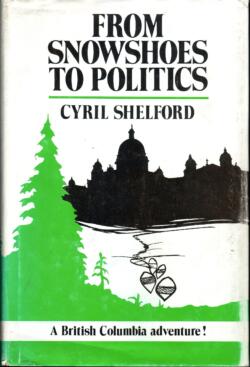
The ideological threads are clearest in the period before 1952. The surprise Social Credit victory confuses matters, though the liberal, modernist, populist, and local threads still persist. The Socreds swept to power on the strength of populist opposition to the governing Liberal-Conservative coalition, but had little interest in populist ideas like referendum and recall and participatory policy-making. When it came to modernization, Bennett’s approach was even more contradictory. With reason, McDonald finds parallels between Bennett and modernizing contemporaries elsewhere in North America, especially Quebec premier Jean Lesage and his fellow Quiet Revolutionaries. Both Bennett and Lesage nationalized hydroelectric power generation, made creative use of crown corporations to further their province-building agendas, and presided over expanding welfare states. But there are limits to the parallel. Lesage’s program owed much to central planning and a professional civil service staffed by social scientists — all hallmarks of political modernism. Bennett, by contrast, was suspicious of bureaucrats, especially university-educated ones, and provincial administration at Victoria remained, well, sleepily Victorian, with power concentrated in a skeletally-staffed Premier’s Office. Their ends were similar, but the British Columbian’s means were more haphazard — less “modern” — than those of his Quebec counterpart.

The fact that McDonald suggests such comparisons points to a key thread of the book, its de-exoticizing of British Columbia politics. Well-versed in political cultures well beyond British Columbia’s borders, McDonald time and time again shows that British Columbia politics does not depart as much as we might think from Canadian, North American, and British-colonial norms. Localized and personalized patronage relationships may have lasted a little longer in British Columbia than elsewhere, but they were not so very different from the practice of politics in pre-Confederation Upper Canada. When a party system finally emerged in British Columbia, it was not only because economic interests had evolved but also because recent settlers from eastern Canada were familiar and comfortable with partisan competition. McDonald even finds precedent for the “fight Ottawa” stance of Duff Pattullo’s Depression-era Liberals in the provincial rights rhetoric of Sir Oliver Mowat, the leading politician of Pattullo’s Ontario youth.
The way to paradise is long indeed. There is greed, grift, exploitation, and exclusion aplenty in A Long Way to Paradise. However, there is also idealism, progressive reform, and steadily broadening political participation. British Columbia politics is complicated, to be sure, but McDonald helps make sense of it. Above all, he demonstrates that politics in “paradise” is perhaps not so wacky as we might once have thought.
*

Forrest Pass is a Curator in the Exhibitions and Online Content Division at Library and Archives Canada. He researches and writes about various aspects of Canadian cultural history, and has a particular soft spot for the history of British Columbia politics and identity. His work on the subject has appeared in BC Studies, the Journal of the Canadian Historical Association, and the Canadian Historical Review. Originally from the Sunshine Coast, he now lives in Ottawa. Editor’s note: Forrest Pass has also reviewed books by Richard Kool & Robert A. Cannings, Moira Dann, Hannah Turner, Maddie Leach & Michael Kluckner, Philippe Tortell, Mark Turin, & Margot Young, and Tom Hawthorn for The British Columbia Review.
*
The British Columbia Review
Publisher and Editor: Richard Mackie
Formerly The Ormsby Review, The British Columbia Review is an on-line journal service for BC writers and readers. The Advisory Board consists of Jean Barman, Wade Davis, Robin Fisher, Cole Harris, Hugh Johnston, Kathy Mezei, Patricia Roy, Maria Tippett, and Graeme Wynn. Provincial Government Patron (since September 2018): Creative BC. Honorary Patron: Yosef Wosk. Scholarly Patron: SFU Graduate Liberal Studies.
“Only connect.” – E.M. Forster

One comment on “1437 Liberals & populists in paradise”